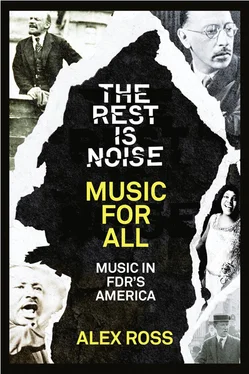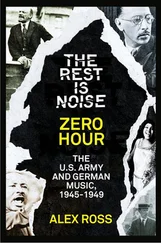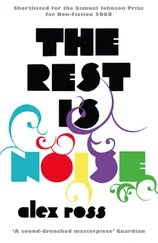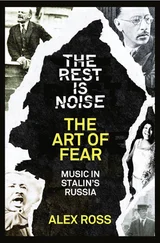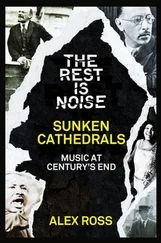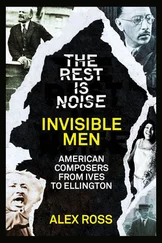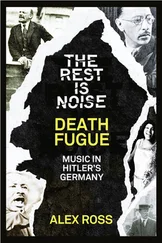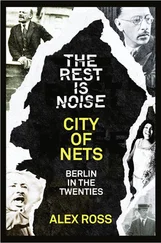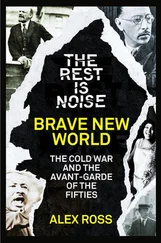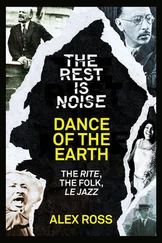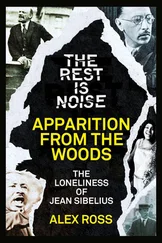This is a chapter from Alex Ross's groundbreaking history of 20th century classical music, The Rest is Noise .
It is released as a special stand-alone ebook to celebrate a year-long festival at the Southbank Centre, inspired by the book. The festival consists of a series of themed concerts. Read this chapter if you're attending concerts in the episode America: a new world discovers its voice.
Alex Ross, music critic for the New Yorker , is the recipient of numerous awards for his work, including an Arts and Letters Award from the American Academy of Arts and Letters, the Belmont Prize in Germany and a MacArthur Fellowship. The Rest is Noise was his first book and garnered huge critical acclaim and a number of awards, including the Guardian First Book Award and the National Book Critics Circle Award. He is also the author of Listen to This.
MUSIC FOR ALL
Music in FDR’s America
From The Rest Is Noise by Alex Ross
Contents
Music for All
Notes
Suggested Listening and Reading
Copyright
About the Publisher
MUSIC FOR ALL
Music in FDR’s America
In 1934, Arnold Schoenberg moved to California, bought a Ford sedan, and declared, “I was driven into Paradise.” By the beginning of the forties, when the Soviet Union, Nazi Germany, and their respective satellites controlled Europe from Madrid to Warsaw, crowds of cultural luminaries sought refuge in the United States, and they were greeted by a significant irony. Europeans had long depicted America as a wilderness of vulgarity; the cult of the dollar had driven Gustav Mahler to an early grave, or so his widow claimed. Now, with Europe in the grip of totalitarianism, America had unexpectedly become the last hope of civilization. The impresario and Zionist activist Meyer Weisgal, in a telegram to the Austrian director Max Reinhardt, put it this way: “IF HITLER DOESN’T WANT YOU I’LL TAKE YOU.” Many leading composers of the early twentieth century—Schoenberg, Stravinsky, Bartók, Rachmaninov, Weill, Milhaud, Hindemith, Krenek, and Eisler, among others—settled in the United States. Entire artistic communities of Paris, Berlin, and the former St. Petersburg reconstituted themselves in neighborhoods of New York and Los Angeles. Alma Mahler was herself among the refugees; she escaped the German invasion of France by hiking across the Pyrenees with her latest husband, Franz Werfel, and by the end of 1940 she was living on Los Tilos Road in the Hollywood Hills.
That such disparate personalities as the White Russian Stravinsky and the hard-core Communist Eisler could feel temporarily at home in America was a tribute to the inclusive spirit of Franklin Delano Roosevelt, who served as president from 1933 until his death in 1945. A patrician with a populist flair, Roosevelt embodied what came to be known as the “middlebrow” vision of American culture—the idea that Democratic capitalism operating at full tilt could still accommodate high culture of the European variety.
Back in 1915, the critic Van Wyck Brooks had complained that America was caught in a false dichotomy between “highbrow” and “lowbrow,” between “academic pedantry and pavement slang.” He called for a middle-ground culture that would fuse intellectual substance with communicative power. In the thirties, the middlebrow became something like a national pastime: symphonic music was broadcast on the radio, literary properties furnished plots for Hollywood A pictures, novels by Thomas Mann and other émigrés were disseminated through the Book-of-the-Month Club.
The influx of European genius coincided with an upsurge of native composition. Pay no heed to the muses of Europe, Ralph Waldo Emerson had told American artists and intellectuals in 1837; by the 1940s the muses were studying for U.S. citizenship exams, and young American composers had found their voice. Aaron Copland wrote music in praise of the Wild West, Abraham Lincoln, rodeos, and Mexican saloons. Alongside Samuel Barber, Roy Harris, Marc Blitzstein, and other more or less like-minded colleagues, Copland reached out to a new mass public with the aid of radio, recording, and film, and, surprisingly, the U.S. government itself. The Works Progress Administration, inaugurated in 1935, launched an ambitious scheme of federal arts projects, and some ninety-five million people were said to have attended presentations by the Federal Music Project over a two-and-a-half-year period. The Democratic masses were evidently taking hold of an art that had long been the property of the elite.
Hence the exhilaration that Blitzstein felt in 1936, when he wrote an article titled “Coming—the Mass Audience!” for the magazine Modern Music: “The great mass of people enter at last the field of serious music. Radio is responsible, the talkies, the summer concerts, a growing appetite, a hundred things; really the fact of an art and a world in progress. You can no more stop it than you can stop an avalanche.”
The mass audience came, but it did not remain. No sooner had classical music entered the mainstream arena than it began to face insurmountable obstacles. One problem was political. Populists of Blitzstein’s type subscribed not just to the vaguely social-Democratic rhetoric of Roosevelt’s New Deal but also to the semi-Communistic doctrines of the Popular Front. When the New Deal came under political attack in 1938, Roosevelt promptly retreated, letting the federal arts projects collapse, and suddenly the picture was a lot less pretty.
There was the deeper problem of classical music’s true place in American culture. At some level Americans did not seem to believe that a Europe-based art form could speak for their condition; to most, Duke Ellington or Benny Goodman was a more convincing musical answer to Emerson’s demand for an American Scholar. Yet Copland and others of his generation succeeded in forging sounds so charged with patriotic feeling that they endure in movies and the media today. During the Depression and the Second World War, classical music, whether in the form of Beethoven symphonies or Copland ballets, encapsulated America’s we’re-all-in-this-together spirit; it showed how individual efforts could be pooled together in a “common discipline,” as Roosevelt said in his inaugural speech of 1933. That music has not lost its binding power. Whenever the American dream suffers a catastrophic setback, Barber’s Adagio for Strings plays on the radio.
Radio Music
Three major technological advances altered the musical landscape from the twenties onward. First, electrical recording allowed for sound quality of unprecedented richness and dynamic range. Second, radio transmission allowed for the live broadcast of music coast to coast. Third, sound was added to motion pictures. Common to all these breakthroughs was the innovation of the microphone, which had the effect of freeing classical music from the elite concert halls in which it had long been confined, and, consequently, from the domain of city dwellers and the wealthy. The millions whom Beethoven longed to embrace in his “Ode to Joy” showed up in the Hooper ratings—up to ten million for Arturo Toscanini’s broadcasts with the NBC Symphony, and millions more for the Metropolitan Opera broadcasts.
Electrical recording set off a rush to rerecord the classics of the orchestral repertory. Leopold Stokowski and his Philadelphia Orchestra led the way with a disc of Saint-Saëns’s Danse macabre in July 1925. Toscanini was not far behind, and with the publicity machine of the radio-recording conglomerate of NBC and RCA behind him he would go on to sell some twenty million records. NBC’s first nationwide radio broadcast took place in November 1926; it carried a concert by the New York Symphony under the direction of Walter Damrosch, a genial conductor and lecturer who was to become a radio star in his own right. A rival network, CBS, inaugurated its existence in 1927 with Deems Taylor’s opera The King’s Henchman. Sound film created new careers for a host of composers, who fleshed out on-screen action with orchestral brouhaha. Contrary to legend, Al Jolson’s cry of “Wait a minute! You ain’t heard nothin’ yet!” was not America’s first experience of the power of sound film; in 1926, Warner Brothers created a nationwide sensation by releasing a film of Don Juan with rousing synchronized accompaniment by the New York Philharmonic.
Читать дальше
